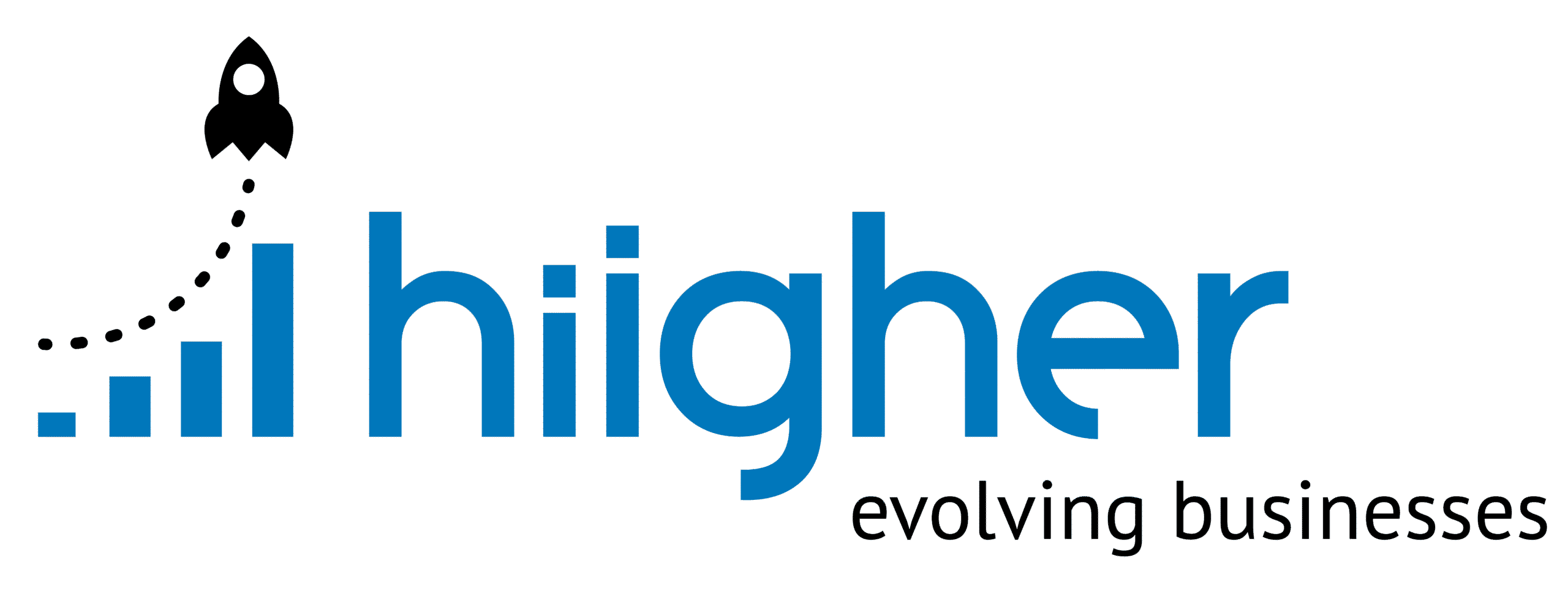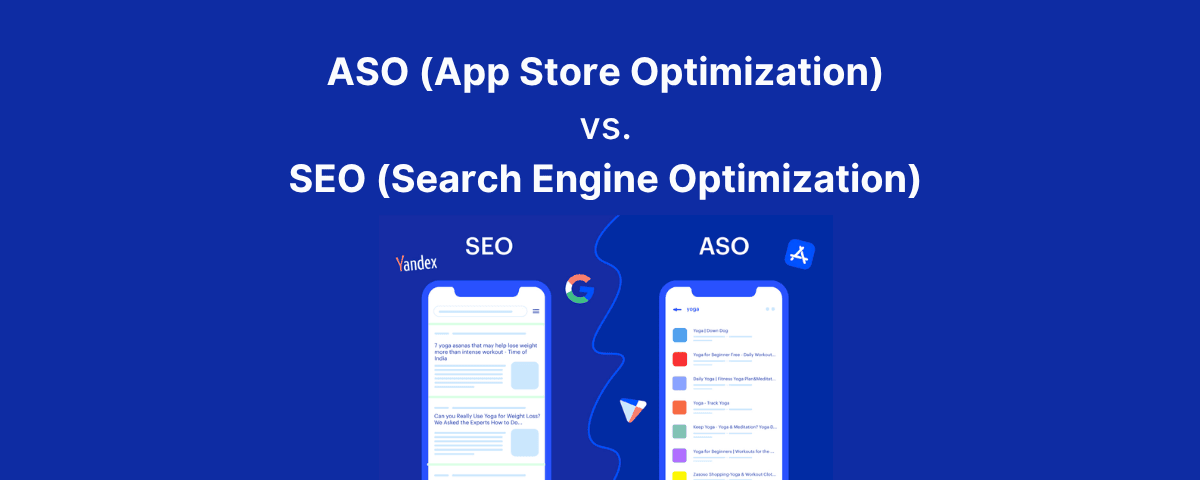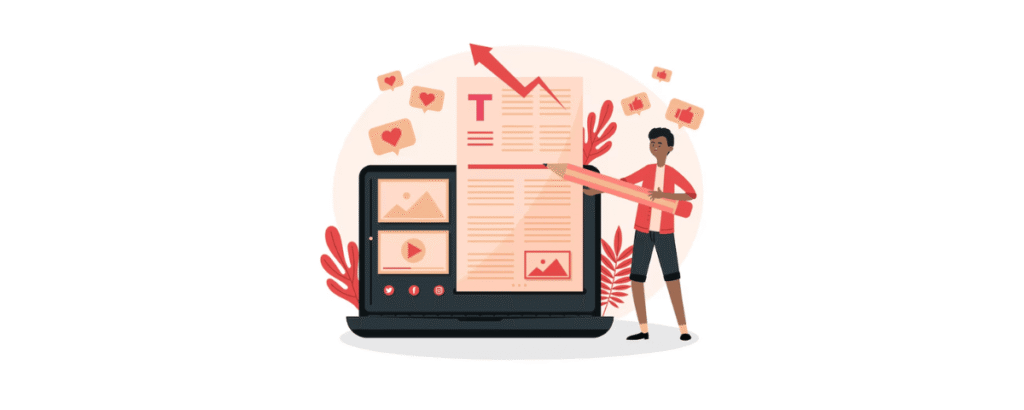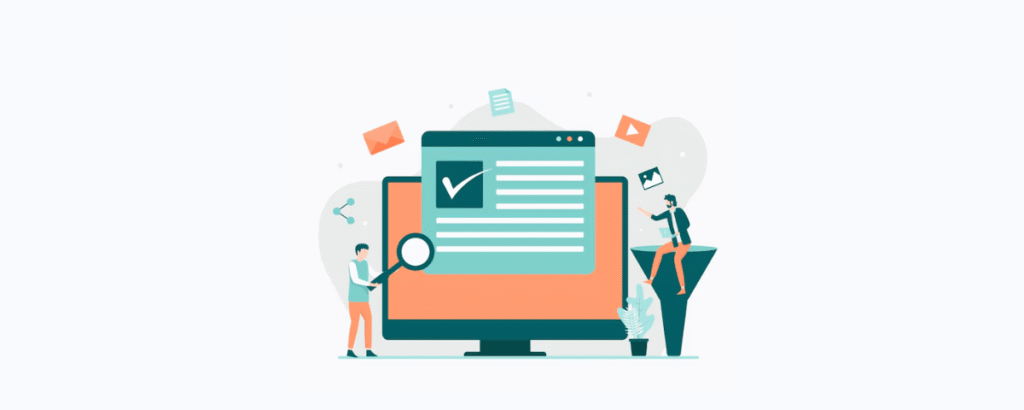- Instagram Marketing Strategy 2025: Tips, Tools & Growth - September 3, 2025
- Facebook Marketing Guide 2025: Strategies to Boost ROI - September 3, 2025
- How to Do an SEO Audit in 2025: Step-by-Step Guide - September 3, 2025
If you’ve ever launched a great product, whether it’s an app or a website, only to watch it barely get noticed, you know the frustration. You pour hours into building something valuable, but in a sea of millions, attention is currency. And that’s where ASO (App Store Optimization) and SEO (Search Engine Optimization) come in.
At Hiigher, we’ve seen the same pattern across industries like eCommerce, SaaS, education, and wellness: the brands getting ahead aren’t choosing between ASO and SEO, they’re combining them. It’s like tuning both the engine and the tires on a race car. You can move with one, but when both are dialed in, you win the race.
Contents
- What is App Store Optimization (ASO)?
- Similarities Between ASO and SEO
- Platforms Targeted by ASO and SEO
- Search Intent: App Store vs Web Search
- Ranking Factors for App Stores
- Ranking Factors for Search Engines
- Keyword Research Techniques
- App Store Listing Optimization Strategies
- Website Optimization Strategies
- Metrics and KPIs for ASO
- Metrics and KPIs for SEO
- Conversion Rate Optimization for Apps
- Conversion Rate Optimization for Websites
- Budget Considerations for ASO
- Budget Considerations for SEO
- Tracking and Analytics Tools
- User Experience in ASO and SEO
- The Role of Reviews and Ratings in ASO
- The Impact of Backlinks in SEO
- Cross-Channel Promotion Opportunities
- Leveraging AI for Optimization
- Best Practices for 2025
- Combining ASO and SEO for Holistic Growth
- Your Next Step
What is App Store Optimization (ASO)?
Picture walking into a massive bookstore where millions of titles fight for your attention. ASO is like having your book front and center, with a cover and blurb that make people stop and think, “This is exactly what I’m looking for.”
In plain terms, ASO is the ongoing process of making your mobile app more visible, and more appealing, inside app stores like Apple’s App Store and Google Play. Here’s what that involves:
- App Title & Subtitle: This is your headline. You want a mix of relevant keywords (for searchability) and a hook that makes people click.
- Description: More than just a keyword list, this is your chance to make users imagine how your app fits into their life.
- Visual Assets: Your icon, screenshots, and preview videos aren’t decoration, they’re conversion tools. A polished icon or a well-timed video can be the tipping point.
- Keyword Research: App store searches are short and focused, “budget tracker,” “photo editor.” That means your keyword strategy needs to be laser-targeted.
- Regular Updates: Refreshing visuals, tweaking descriptions, and improving performance signals to the app store that your app is alive and improving.
The payoff? Instead of endlessly buying ads to keep downloads coming, a solid ASO strategy builds organic discovery, pulling in high-quality users who are already looking for what you offer.
What is Search Engine Optimization (SEO)?
If ASO is about dominating the shelves of the app store, SEO is about owning the front page of Google. When someone searches for what you sell, you want your site to be there, ideally in the top three spots, where clicks happen most.
SEO works on three fronts:
| Component | What It Does |
| On-page SEO | Makes your content and keywords crystal clear to search engines so they know when to show your site. |
| Off-page SEO | Builds credibility by earning backlinks from reputable, relevant sites. |
| Technical SEO | Ensures your site loads quickly, works flawlessly on mobile, and is easy to navigate. |
When we handle SEO at Hiigher, it’s not just about “getting more traffic.” It’s about getting the right search qualified traffic, people who are actively looking for what you offer and are ready to act. That means pairing search data with real human intent, creating content that answers questions before they’re even asked, and tracking performance so we can adapt in real time.
ASO vs SEO: The Key Differences
Although both strategies are built on research, optimization, and user experience, they live in different worlds:
- Where They Happen: ASO = app stores. SEO = web search engines.
- User Behavior: App store searches are short and specific; web searches are often longer and exploratory.
- Primary Goal: ASO chases downloads and in-app engagement; SEO chases web traffic, leads, and sales.
Example: If you run a wellness brand, your ASO campaign might target “guided meditation app” in Google Play, while your SEO strategy could focus on “best mindfulness techniques” in Google search.
The real magic happens when both work together. At Hiigher, we often align ASO and SEO keyword strategies so that your app store presence supports your website, and vice versa. That way, no matter where your audience starts their search, you’re already in front of them.
Similarities Between ASO and SEO
On the surface, ASO and SEO might seem like completely different beasts. One’s about mobile apps, the other’s about websites. But if you strip them down to their core strategies, they share a lot of common DNA.
Both rely on:
- Keyword Research: Whether it’s “fitness tracker” in the App Store or “how to start a workout plan” in Google, the goal is the same, know what your audience is searching for and show up when they do.
- Metadata Optimization: This is the behind-the-scenes info that tells a platform what you’re about. For apps, it’s titles, subtitles, and descriptions. For websites, it’s title tags, meta descriptions, and headers.
- User Experience: Happy users mean better rankings. In app stores, that’s reflected in ratings and reviews. On the web, it’s engagement metrics like time on site and bounce rate.
- Continuous Updates: Both worlds reward fresh, active listings. That might mean updating your app visuals and features, or refreshing your blog content and cleaning up broken links.
At Hiigher, we’ve found that when a brand already has a strong SEO foundation, their ASO work often becomes easier, and vice versa. That’s because the skills overlap. If you already understand how to craft keyword-driven, user-focused content, you’re halfway there.
Platforms Targeted by ASO and SEO
This is where the game board splits in two.
- ASO Platforms: Apple App Store, Google Play Store, Amazon Appstore. Each has its own ranking algorithm, but they all care about keyword relevance, user engagement, and quality.
- SEO Platforms: Google, Bing, and other search engines. Here, it’s all about crawling, indexing, and ranking your site pages for the right queries.
Why does this matter? Because the way users interact with these platforms is fundamentally different.
If someone’s in the Apple App Store, they’re often one or two taps away from downloading something. They want a quick, specific solution.
If they’re on Google, they might be researching, comparing options, or looking for deeper information before they commit.
Hiigher’s approach here is simple: meet your audience where they are and how they search. That means crafting app store listings for the “ready-to-download” crowd and SEO content for the “still-deciding” crowd.
Search Intent: App Store vs Web Search
This is one of the most overlooked factors in ASO and SEO success.
- App Store Intent: Usually short, action-oriented searches. Users type in two or three words like “expense tracker” or “calorie counter,” and they’re ready to install something now. Ratings, reviews, and visuals can make or break that decision.
- Web Search Intent: Often longer, more varied searches. These might be informational (“how to track expenses”), navigational (“best expense tracker app”), or transactional (“download expense tracker”).
When you understand these differences, you can create content that matches where the user is in their decision-making process.
For example:
If your app is a budgeting tool, your ASO listing should lean heavily into words like “budget,” “money,” “tracker,” and feature clean, compelling visuals that show the app in action.
Meanwhile, your SEO content might include blog posts like “5 Simple Ways to Save Money Each Month” that naturally link back to your app’s download page.
This is how Hiigher builds a loop of discovery, web content drives to your app store listing, and your app presence drives brand searches on Google.
Ranking Factors for App Stores
If you want your app to climb the charts, you need to understand what the app stores actually reward. It’s not a mystery, it’s a mix of relevance, engagement, and quality signals.
Key factors include:
- App Title & Keywords: These carry the most weight for search visibility. Your title needs to be clear, relevant, and keyword-rich without looking spammy.
- Visual Assets: Icons, screenshots, and videos aren’t just for show, they directly impact conversion rates. The more people download after seeing your listing, the higher your app climbs.
- Ratings & Reviews: High ratings build trust and push rankings up. A single-star bump can significantly boost conversions.
- Update Frequency: Regular updates tell the app store you’re actively improving the user experience.
- Engagement Metrics: Installs, retention rates, and user activity all feed the algorithm.
When we work on ASO at Hiigher, we often start by A/B testing app visuals and copy, because improving conversion rates here gives you a double win: more downloads and better rankings.
Ranking Factors for Search Engines
Google and Bing operate differently from app stores, but the idea is the same, reward relevant, useful, and engaging content.
Important factors include:
- Content Quality & Relevance: Google favors well-written, user-focused content that answers the search query completely.
- Keyword Optimization: Naturally weaving target keywords into titles, headings, and body copy.
- Backlinks: Links from other reputable sites signal authority.
- Technical Health: Fast load times, mobile responsiveness, and secure HTTPS connections all improve rankings.
- Engagement Signals: Click-through rate, time on page, and low bounce rates are strong indicators that users find your content valuable.
At Hiigher, we don’t treat technical SEO as “extra credit.” It’s foundational. Even the best content won’t rank if your site takes 6 seconds to load or is clunky on mobile.
Keyword Research Techniques
Here’s where ASO and SEO overlap heavily, but the tactics shift based on platform behavior.
For ASO:
- Use app store intelligence tools (AppTweak, Sensor Tower) to find keywords your competitors rank for.
- Focus on short, high-intent terms closely tied to your app’s features.
- Track and adjust regularly based on ranking movement and download trends.
For SEO:
- Use tools like Google Keyword Planner, SEMrush, or Ahrefs.
- Target a mix of short-tail and long-tail keywords to capture both broad and niche traffic.
- Study search intent, are people looking to buy, compare, or just learn?
We’ve seen the most success at Hiigher when we cross-pollinate keyword data, using insights from web search to inform app store optimization, and vice versa. This not only creates consistency in messaging but also helps you dominate both spaces for the same core terms.
App Store Listing Optimization Strategies
Your app store listing is the digital equivalent of a storefront window, it needs to grab attention and invite people in. If it’s vague, cluttered, or unappealing, users will scroll right past you.
Here’s what works:
- Strong Title & Subtitle: Include relevant keywords, but keep it readable. You’re writing for humans first, algorithms second.
- Compelling Description: The first three lines matter most, they appear before the “Read More” button. Lead with the benefits, not just the features.
- High-Quality Visuals: Use crisp screenshots that show real in-app use, not just abstract graphics. Preview videos should be short, engaging, and highlight your app’s most valuable features.
- Regular Updates: Refresh metadata and visuals every 4–6 weeks to keep your listing competitive.
- Localization: Translate and adapt your listing for different languages and cultural contexts to open up new markets.
At Hiigher, we often run A/B tests on app visuals and copy before committing to a listing change. This way, we know what actually improves downloads before rolling it out globally.
Website Optimization Strategies
If ASO is about making your app listing convert, SEO is about making your website stick in search rankings and turn visitors into customers.
Key strategies include:
- Page Speed Improvements: A slow site is a conversion killer. Even a one-second delay can drop conversions significantly.
- Mobile Optimization: With over half of global traffic coming from mobile, a clunky mobile experience is a non-starter.
- Targeted Content Creation: Create content that directly answers the questions your audience is asking. Use keywords naturally and provide value first.
- Content Refreshing: Keep your site alive by updating old articles, fixing broken links, and adding fresh insights.
- Clear Calls-to-Action: Every page should guide visitors toward the next step, whether that’s signing up, booking a demo, or downloading your app.
Hiigher’s approach to website optimization always starts with user experience. If your site doesn’t make visitors feel confident and understood within the first few seconds, you’re already losing potential conversions.
Metrics and KPIs for ASO
Improving your app listing is only half the job, you also need to know if those improvements are working. That’s where ASO KPIs come in.
Key metrics to track:
| Metric | What It Measures | Why It Matters |
| App Store Rankings | Visibility for targeted keywords | The higher you rank, the more organic downloads you attract |
| Conversion Rate | Installs per store listing view | Shows if your visuals and copy persuade users to download |
| Download Numbers | Total installs over time | Measures the overall reach of your ASO efforts |
| Retention Rates | How many users return after install | Indicates long-term value and satisfaction |
At Hiigher, we set benchmark goals before launching an ASO strategy. That way, we’re not just chasing “more downloads” blindly, we know exactly what success looks like and can adapt if numbers plateau.
Metrics and KPIs for SEO
In SEO, the metrics shift from downloads to traffic and engagement.
Key indicators include:
- Organic Traffic: The number of visitors finding you through unpaid search results.
- Click-Through Rate (CTR): How many searchers choose your listing when they see it in results.
- Conversion Rate: The percentage of visitors taking your desired action, buying, signing up, or downloading your app.
- Bounce Rate: How often visitors leave after viewing just one page (often a sign of mismatched intent or poor UX).
When Hiigher tracks SEO, we always link these metrics back to revenue. Traffic is nice, but traffic that converts is where the real value lies.
Conversion Rate Optimization for Apps
When a user lands on your app listing, you have just seconds to win them over. CRO for apps is about making sure those seconds count.
Effective tactics:
- Refine Your Title & Description: Make sure every word is earning its place by building relevance and interest.
- Upgrade Visuals: High-quality screenshots and preview videos can boost downloads by up to 30%.
- A/B Test Everything: Icons, screenshots, videos, even your primary keyword placement.
- Encourage Reviews: Social proof is one of the strongest download drivers.
- Localize: Tailoring your listing for each region can increase conversions by up to 50%.
Hiigher often runs parallel CRO tests on both creative assets and copy. The changes that work in one market sometimes flop in another, data keeps us from guessing.
Conversion Rate Optimization for Websites
CRO for websites is about removing friction from the user journey so visitors take action without hesitation.
Core moves include:
- A/B Testing: Headlines, call-to-action buttons, and page layouts should all be tested.
- Clear CTAs: Use language that’s direct, benefit-focused, and easy to spot.
- Heatmaps & Feedback Tools: See exactly where users get stuck or drop off.
- Fast, Smooth UX: If your checkout page or signup form feels clunky, users will abandon ship.
Hiigher treats CRO as a continuous process, not a “one and done” tweak. Every improvement compounds over time.
Budget Considerations for ASO
ASO doesn’t need a massive ad budget to work, but it does need consistent investment, mainly in tools, creative assets, and testing.
Where your ASO budget might go:
- Keyword Research Tools: Platforms like AppTweak or Sensor Tower help you spot high-value keywords and track rankings.
- A/B Testing Software: To compare app icons, screenshots, and copy before rolling out changes.
- Creative Production: Quality icons, screenshots, and videos can make or break conversion rates.
- Localization Services: Translating and culturally adapting your app store listing for new markets.
At Hiigher, we help clients allocate budgets based on their growth stage. Start lean with the highest-ROI changes, then scale your investment as downloads and engagement grow.
Budget Considerations for SEO
SEO often requires a more layered budget because it touches more channels, content, technical work, and outreach.
Typical costs include:
- Premium SEO Tools: SEMrush, Ahrefs, and others for keyword tracking, competitor analysis, and backlink monitoring.
- Content Creation: High-quality, well-researched articles or landing pages can cost $100–$500 each (sometimes more for niche industries).
- Link Building Campaigns: Outreach for high-authority backlinks, which can range from $500 to several thousand dollars monthly.
- Technical Support: Developers to fix site speed, mobile usability, and structural SEO issues.
Hiigher’s rule of thumb: treat SEO as an ongoing investment, not a one-off project. You’re building long-term visibility and authority.
Tracking and Analytics Tools
Data is what makes ASO and SEO powerful, without it, you’re guessing.
For ASO:
- App Annie: Keyword tracking, download trends, and market analysis.
- Sensor Tower: App performance metrics and competitive insights.
For SEO:
- SEMrush: Comprehensive site audits, keyword tracking, and content analysis.
- Ahrefs: Backlink monitoring, competitor research, and traffic analytics.
Hiigher uses a blended reporting approach, pulling ASO and SEO data into a single dashboard, so clients can see how both strategies are feeding each other.
User Experience in ASO and SEO
While both ASO and SEO aim to get you found, user experience (UX) is what makes people stick around, or bounce.
In ASO:
- Polished visuals and clear descriptions keep users from swiping past.
- A/B testing icons and screenshots helps discover what actually drives downloads.
In SEO:
- Fast load times, mobile-friendly layouts, and intuitive navigation keep visitors engaged.
- Poor UX not only drives users away, it sends negative signals to search engines, hurting your rankings.
At Hiigher, we think of UX as the “silent ranking factor.” People may not see it in a keyword list, but it influences every click, tap, and swipe.
The Role of Reviews and Ratings in ASO
In the app store world, reviews are more than just feedback, they’re fuel for both credibility and ranking.
- Higher Ratings = Higher Conversions: Apps with a 4+ star average are far more likely to get downloaded.
- Fresh Reviews Keep You Relevant: Regular, recent reviews signal active engagement and keep your app from looking abandoned.
- Responding Builds Trust: A quick, thoughtful response to a review (good or bad) shows you care about the user experience.
At Hiigher, we help brands put systems in place to actively encourage positive reviews, from in-app prompts to post-support follow-ups, without crossing into spammy territory.
The Impact of Backlinks in SEO
If reviews are the lifeblood of ASO, backlinks are the authority signal for SEO.
- Quality Over Quantity: A single backlink from a trusted, relevant site can outweigh dozens from low-quality sources.
- Authority & Trust: Search engines treat backlinks like recommendations from respected peers.
- Referral Traffic Bonus: Beyond SEO benefits, backlinks can bring in highly targeted visitors directly.
Hiigher approaches backlink strategy with the same mindset as PR, your brand’s story should appear in places your ideal audience already trusts.
Cross-Channel Promotion Opportunities
Here’s where ASO and SEO stop being separate projects and start working as one.
- Web to App Store: Blog posts, landing pages, and SEO-driven content can funnel visitors straight to your app listing.
- App to Web: An app can promote exclusive content or offers that drive users back to your website.
- Social Media Bridge: Announcing app updates on social channels boosts both web and app engagement.
At Hiigher, we call this the “Discovery Loop”, every platform sends traffic to another, creating a compounding effect that keeps your brand visible from every angle.
Leveraging AI for Optimization
AI tools can help speed up the process without replacing the strategic human touch.
- Keyword Analysis at Scale: AI can scan thousands of potential keywords to uncover untapped opportunities.
- Sentiment Analysis: Automatically assess the tone of user reviews to spot hidden strengths or pain points.
- Automated A/B Testing: Rapidly test app visuals, ad copy, or landing page variations to find winners faster.
Hiigher uses AI to handle the heavy lifting, data crunching, trend prediction, so our team can focus on the creative, human side of optimization that AI still can’t replicate.
Best Practices for 2025
The digital competition isn’t slowing down in 2025, it’s getting sharper. To stay ahead, you’ll need a data-first, user-first approach for both ASO and SEO.
For ASO:
- Refresh app metadata (title, subtitle, description) every 4–6 weeks.
- Use A/B testing before committing to creative changes.
- Localize listings to capture international markets.
- Engage with user reviews consistently.
For SEO:
- Target both high-volume and long-tail keywords to capture multiple layers of search intent.
- Build authoritative backlinks from industry-relevant sources.
- Keep your site lightning-fast and mobile-friendly.
- Refresh old content to maintain rankings and relevance.
Hiigher builds these practices into long-term roadmaps so brands aren’t reacting to changes, they’re ready for them.
Combining ASO and SEO for Holistic Growth
When you align your ASO and SEO strategies, the results compound:
- Unified Keyword Strategy: Insights from app store searches inform web content, and vice versa.
- Cross-Platform Visibility: Users encounter your brand whether they start in Google or the App Store.
- Consistent Messaging: Both channels tell the same story, reinforcing trust and recognition.
At Hiigher, we’ve seen this synergy take brands from invisible to unmissable. A wellness app client, for example, boosted downloads by 68% after aligning their app store keywords with their blog topics, and the blog traffic rose 54% in the same period.
Your Next Step
Think of ASO and SEO as the twin engines of your growth machine. You can run on one, but when both are fine-tuned, you get further, faster.
If you want a strategy that doesn’t just chase rankings or downloads but actually turns visibility into revenue, Hiigher can help you get there. We combine creative, platform-native execution with data-driven precision, so you’re not just keeping up with the market, you’re setting the pace.
Ready to make ASO and SEO work together for your brand? Let’s talk.
How useful was this?
Click on a star to rate it!
Average rating 0 / 5. Vote count: 0
No votes so far! Be the first to rate this post.
We are sorry that this post was not useful for you!
Let us improve this post!
Tell us how we can improve this post?




